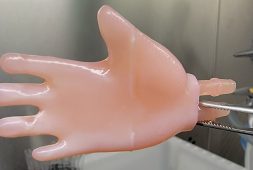
When doctors want to gauge your overall health, they also consider the circumference of your waistline. This is crucial for them because according to research, the higher BMI and waist circumference could lead to exhaustion, weakness, and physical decline.
This is especially true for the midlife belly bulge and excessive weight. This elevates your chances of becoming frail as you age. This was according to a new study, published January 23 in BMJ Open.
In order to look into the hypothesis, scientists in Norway looked into data from about 4,500 people who are 45 years old or older. The study’s start was an average of 21 years old. They saw that those who had a bigger waist circumference measurement at the start were twice more likely to be frail or pre-frail. The latter means that they are more at high risk of becoming frail than those who started out the study with a normal waist size.
Frailty versus Pre-Frailty
For this research, the experts needed to define frailty and in order to do so, they turned to a commonly used assessment scale that’s designed to establish a “frail” person as having showing at least three of the following five criteria:
- Exhaustion
- Weak strength when it comes to gripping
- Slow walk
- Low levels of physical activity
- Unplanned or unintentional weight loss
Those considered to be pre-frail have one or two of these criteria.
A Larger Waist Size May Also Up the Frailty Risk
The researchers utilized the standards that have been set by the World Health Organization (WHO). They defined a “normal” waist circumference as around 37 inches or less for males and around 31 inches or less for females. A moderately large waist was around 37 to 40 inches for makes and 32 to 35 inches for females. A high waist circumference would be anything that was higher than the numbers stated above.
Those who already had a high waist circumference measurement at the start were twice as likely to be considered frail or pre-frail be the end. Those with a moderately large waist needed to worry about the 57 percent greater chance of frailty or pre-frailty. Those with a normal belly size were safe.
As for those who were considered obese at the beginning, who was defined solely by body mass index, or BMI, the chance of becoming frail or pre-frail by the time the monitoring period has ended was nearly two and half times greater than participants that had a normal BMI.
As for the dody mass index (BMI), this is a ratio of weight to height. A BMI under 18.5 is considered underweight. An 18.5 to 24.9 is considered normal. A 25 to 29.9 mass is considered overweight, while 30 or higher is already obese. This was per the Centers for Disease Control and Prevention (CDC).
There was a greater risk from having both a high BMI and a large waist. Those who started out with the two had three times more chances of becoming frail than those without it.
“Our findings indicated that individuals who had both high BMI and high waist circumference at baseline had a higher probability of becoming pre-frail or frail compared to other groups later in life,” said the lead study author Shreeshti Uchai. She is a PhD student in the department of nutrition at the University of Oslo in Norway. “This indicates the importance of monitoring not just our BMI but also our waist circumference throughout adulthood,” she added.
BMI and Waist Size Both Are More Efficient Obesity Measures
BMI (body mass index) measures a person’s weight and height to indicate high body fat, but this does not take body composition into consideration.
“You can have a bodybuilder whose BMI falls in the obesity range who is actually very fit and has high muscle [mass],” Chika Anekwe, MD, MPH said. She is an obesity medicine physician at Massachusetts General Hospital and an instructor in medicine at Harvard Medical School in Boston. She was not part of the new study but is still an expert. She also believes that waist size adds an extra measure that better considers fat.
Uchai’s research stresses on the value of waist size when it comes to overall health and expands on previous investigations that show the link between obesity and frailty. The Cleveland Clinic says that waist measurements of 35 inches or more for women and 40 inches or more for men indicates that you’re already at risk for health problems that come from visceral fat (which is belly fat that is deep within the abdominal cavity).
Extra Fat Around the Midsection Could Bring About Frailty
Frailty brings about a variety of health issues. Dr. Anekwe said that frailty is associated with “an increased risk of adverse events such as falls, disability, hospitalization, and reduced quality of life, all of which may increase risk for mortality.”
John Batsis, MD is an associate professor of geriatric medicine at the University of North Carolina School of Medicine in Chapel Hill. He was also not part of the new study. He stated how extra belly fat can cause to frailty. “Visceral fat promotes inflammation, which then has more widespread effects on other organs and one’s physiology — including muscle and changes in body composition, important alterations in skeletal muscle mass and strength. [These effects] often lead to frailty and mobility disability,” he said.
A lowering of muscle strength and function because of obesity has been connected to lipids (which are fat in the blood) that gets inside muscle fibers.
Frail older adults also have lower physiological reserves, which in turn, also lowers their ability to resist external stressors. This also makes them more vulnerable, Uchai said.
Study Challenges the Idea of ‘Fat but Fit’
While there are health experts out there who believe a person can be “fat but fit,” the findings of this research appears to contradict that very belief.
“Studies like this one strengthen the fact that there is no ‘fat but fit’ concept, as this study clearly shows that putting on weight above guideline cutoffs also has mechanical effects on the body — frailty in this case — along with causing other mechanical conditions such as osteoarthritis,” said Peminda K. Cabandugama, MD. She is an endocrinologist at Cleveland Clinic and she was also not part of the study.
He said that this study sends a strong message. It tells people from all age range that they should be trying to attain the right weight. This will be eventually beneficial for them especially if they get older and will want to engage in activities of daily life experiencing little to no difficulty while doing so.
“Obesity is a chronic disease like all the others and it needs to be treated as such with lifelong management,” said Dr. Cabandugama.



